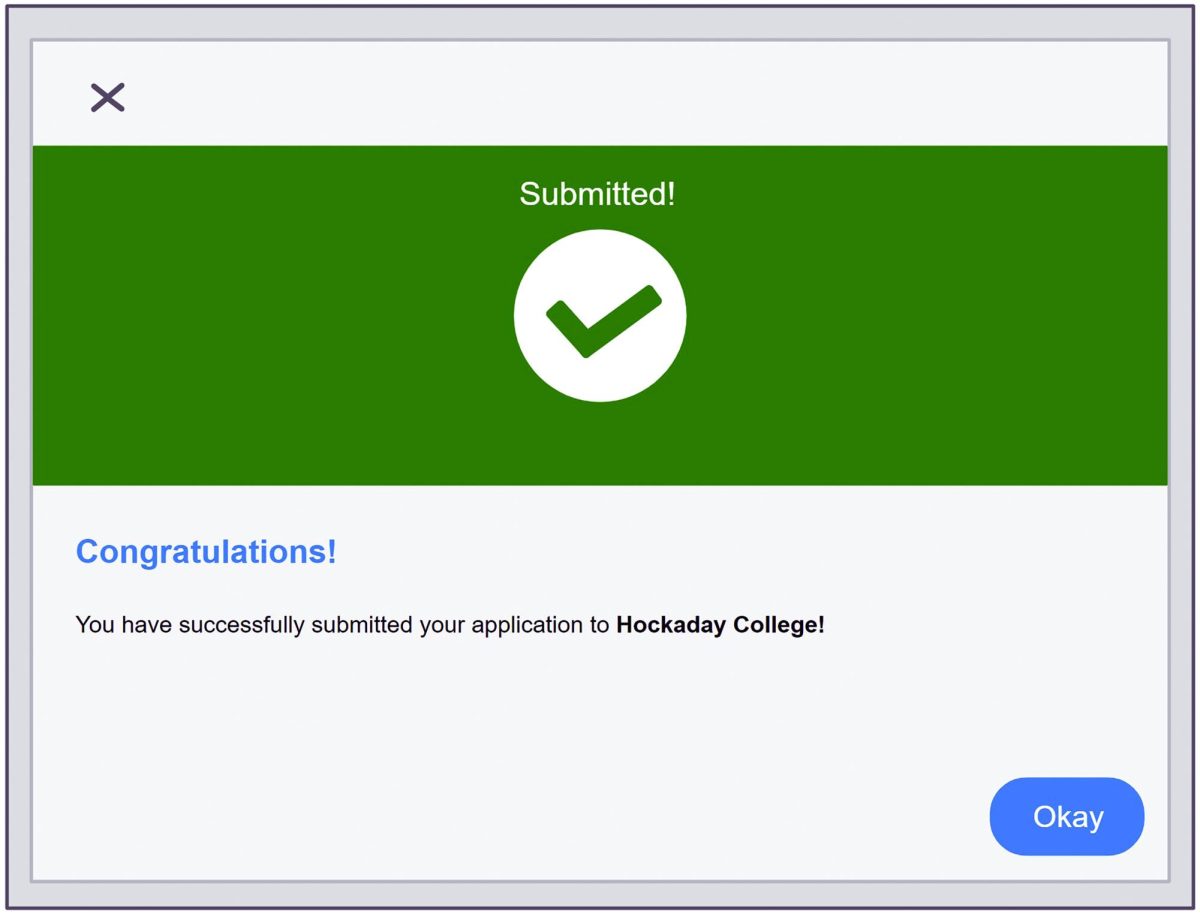
The End of Affirmative Action
Issued as Executive Order 10925 in 1961, the term “affirmative action” was coined by the government to improve employment, education and other opportunities for people who have been subjected to discrimination. Originally, in President John F. Kennedy’s order, this only ensured equal treatment to applicants “without regard to race, color, religion or national origin.” President Richard Nixon later amended this executive order in 1971 to include gender within the range of groups.
In the following years, multiple undergraduate, medical and law students took separate universities to court, claiming the school’s admission process violated the Fourteenth Amendment’s Equal Protection Clause.
In 1977, the first case brought to the Supreme Court was Allan Bakke versus the University of California-Davis School of Medicine. Bakke, a 35-year-old white male, had applied to the California medical school twice and was rejected both times. In UC-D’s affirmative action program, 16 of the 100 open spots for the entering class were reserved for “qualified” minorities. Bakke’s test scores and college GPA exceeded those of the “qualified” minorities for both years that he applied. So, he argued that his rejection from the medical school was solely based on his race. The Court ruled that colleges may not use quotas in the admissions process but allowed the continued use of race as an admissions factor.
On June 29, 2023, both Supreme Court cases involving the Students for Fair Admissions (SFFA) were decided, claiming the college admission processes of Harvard University and the University of North Carolina violated the Equal Protection Clause of the Fourteenth Amendment. The Court’s ruling effectively ends affirmative action in college admissions.
New Hockaday Law teacher and retired attorney with 26 years of experience John Klassen said that this decision was not a shock to those who have paid attention to the more recent decisions of the Supreme Court.
“The thing that largely changed between previous cases and the most recent ones between the SFFA, Harvard and UNC was the makeup of the court,” Klassen said.
In both cases, the majority was comprised of the six conservatives serving on the Supreme Court, with Chief Justice of the Supreme Court John Roberts writing the majority opinion for both cases. While the decision to end affirmative action in colleges’ admission processes was not a surprise, the extent to which race will be allowed in a student’s application is still up for debate. In the majority opinion of SFFA v. Harvard, Roberts said, “the student must be treated based on his or her experiences as an individual – not on the basis of race.”
Roberts explained how students may use their race in conjunction with a story highlighting their courage overcoming discrimination, or how their race motivated them to achieve certain goals and leadership positions. Therefore, while the check box signifying the race of individual was removed, there are still opportunities for colleges to acknowledge a student’s race in their decision.
Senior Julia Emery, a representative for the External Policy board of the Queer Student Union, believes the end of affirmative action in college admissions has a significant impact on the Queer community.
“Openly queer people have often had difficulties getting into colleges with more traditional beliefs,” Emery said. “Taking away affirmative action diminishes the importance of your queer identity.”
She added that her personal college essay is about coming to terms with her queer identity. She also said how, even though the queer community is affected by the end of affirmative action, there are other diverse communities greatly impacted by the law as well (largely because the Queer identity is not as easily identifiable).
“I am saddened by the overturning as whole, and I recognize that there are other people affected more greatly by it than Queer individuals,” Emery said.
QSU intends to foster discussions about the overturning of affirmative action in some of their club meetings.
Senior Yoyo Yuan, Co-President of the Asian Student Association, said the end of affirmative action may cause minority groups to experience even greater struggles when trying to enter college.
“I think it’s also important to value diversity in colleges because people benefit from having communities with multiple cultures,” Yuan said. “The stereotype for Asians may change a little bit. I hope that admissions officers will be equally fair in looking at Asian students’ applications without affirmative action.”
Yuan also discussed the bias surrounding students of Asian descent when applying to college, adding how admissions officers may reduce their racial biases in lieu of the overturning.
Similar to their “lunchbox” meetings in the past, the Asian Student Association intends to discuss the impact of the ruling in the next few months.
Senior and President of the Black Student Union Alyssa Anderson believes the overturning of affirmative action is unfair, especially for people from disadvantaged backgrounds.
“There’s a lot of Black people in the United States who don’t have the access to the same resources that other races do,” Anderson said. “Affirmative action was that equalizer, and now that it’s gone, people aren’t able to showcase that they weren’t in the same situations as other applicants to admissions officers.”
Anderson added she personally has noticed that colleges have asked questions about how students will contribute to the diversity of the campus, as opposed to asking directly about race as they had previously done in the past. Anderson also noted that affirmative action helped reduce bias against other groups.
“A lot of people say that if you say you’re a minority, people are more inclined to let you in to increase the diversity in colleges, but I can see how not including race eliminates some of the biases of application reviewers too,” Anderson said.
Currently, BSU has no plans to discuss affirmative action with their club members, but they may have later discussions.
Senior Olivia Zambrano, president of the Latin Hispanic Student Union, said that by overturning affirmative action, students now have difficulty in deciding to what extent they should talk about their race in their applications.
“The overturning of affirmative action makes certain things harder for groups like Hispanic people who may not have had certain opportunities in the past,” Zambrano said.
However, Zambrano added that legacy admissions are also an important factor to consider when discussing affirmative action. According to the New York Times, Harvard legacy applicants make up only 5% of their applicants, but they are 30% of the student body.
“If you’re automatically admitting someone just because they’re a legacy student, that feels like a different part of the admissions process that most people aren’t thinking of,” Zambrano said.
Micah Lyles, Co-Director of College Counseling, said the ruling changes some application questions for colleges.
“Simply, colleges can no longer ask students to check a box indicating their race,” Lyles said. “Many applications still have the checkbox for data-collection purposes, but when it’s sent to colleges, they will not receive that information.”
Lyles added that many schools now include an extra question in their applications, allowing students to discuss their background in the form of an essay. He added that one downside of the ruling is the way he hears students reflecting on it.
“I feel that some students feel like their identity is being undervalued,” Lyles said. “To me, the most apparent con that we see is just the impact that it has had on students in how they perceive their identity.”
Lyles said that the actual effects of the ruling are yet to be determined. However, he added that because of the Court’s decision, he sees more students who are willing to write about their identity.
“I do think there is a tendency to misconstrue, and people assume it’s just about college when affirmative action is so much larger,” Lyles said. “That’s some of the conversations we have with students, and we try to make it clear that there is no case where one single factor is causing one student to take a place from another student in the overall context of the admissions process.”
Lyles stresses the importance of researching each college before applying, something the College Counseling Team helps juniors with during the spring. He encourages students to visit the National Association for College Admission Counseling (NACAC) website, which provides more information about the ruling in detail.
“Students are making their college lists based upon their research,” Lyles said. “They are going to find the places that value them, where they can find what they are looking for in an academic and personal environment.”
Lyles also said that the immediate impact on the Hockaday College Counseling Team really consists of the amount of time they are having to spend understanding the ruling and connecting with college representatives about their stances on the law.
“As far as our daily work with students, the overturning hasn’t changed anything,” Lyles said. “We are so fortunate here to have a process that is so individual that we sit behind these doors and help students fully represent themselves in their application, and we will continue to do that.”
Tracey Tevis, Director of Diversity, Equity and Inclusion at Hockaday, got involved with DEI (Equity, Civil Rights, and Title IX) initiatives during her time in college. Since then, she has held roles throughout all education groups, recently working in the DEI office at Baylor University. She was working at Baylor at the time of the ruling, allowing her to observe the direct effects of what overturning affirmative action meant for colleges.
“We were having conversations at Baylor about the overturning in my office,” Tevis said. “For me at first, I was a little shocked when I heard about the Court’s decision.”
Tevis stressed the importance of doing research before forming an opinion, especially when it comes to polarizing topics like affirmative action.
“You can’t just look at TikTok and Facebook,” Tevis said. “You need to hear both sides so you’re able to form an opinion on things.”
Tevis added that students will still talk about how their race plays a role in their lives if they choose to discuss it in their applications. She also outlined how research shows that learning in places with diverse individuals helps develop skills like creativity and problem-solving. She encouraged students to discuss in their college applications what makes them who they are, especially if that includes certain identifiers (e.g. race, socioeconomic status, ability, age, gender, religion).
“If you feel like your race, socioeconomic status, gender or age (or other identities) affect how you see or view the world, I encourage students to speak about these things because that makes you who you are,” Tevis said.
Even though the Supreme Court’s decision affects all universities with affirmative action programs in place, some states had already banned the practice of affirmative action within their own state colleges.
In 1996, California implemented a ban on affirmative action in their public universities. According to the National Public Radio, in the following two years, Black and Latino enrollment at UCLA and UC Berkeley dropped 40%.
Additionally, economists who observed the admissions data at Harvard and UNC discovered that by removing their preferences according to race, the number of admitted Black students would fall by two-thirds while Hispanic students would drop 6%.
While these are only two examples, most researchers and journalists assume that the rest of the country’s colleges will follow this pattern and face a drop in the racial diversity of their student bodies.
As for the future of Supreme Court, along with lower courts’ decisions, Klassen predicts that this decision will cause an influx of new cases surrounding race-conscious admissions and determining the intent of a school’s acceptances or rejections.
Klassen said a Virginia case working its way through the courts now may further impact admissions processes. At Thomas Jefferson High School in Viriginia, admission was largely determined by a test score. However, the school was not happy with their underrepresentation for Black and Hispanic students as well as low-income students and English-language learners. So, the school revised their admissions process to boost their diversity by limiting the consideration of this test score.
According to The Washington Post, this caused a dip in Asian American representation by 30%, leading a group of parents to file a petition for the Supreme Court to hear their argument that the high school’s new admission process racially discriminates against Asian Americans.
“So, this raises the question, can schools come up with something like limiting tests where they still can get the same result?” Klassen said. “It is going to be difficult for courts to determine the intent of a school and whether or not they appear to be making race-conscious decisions.”











